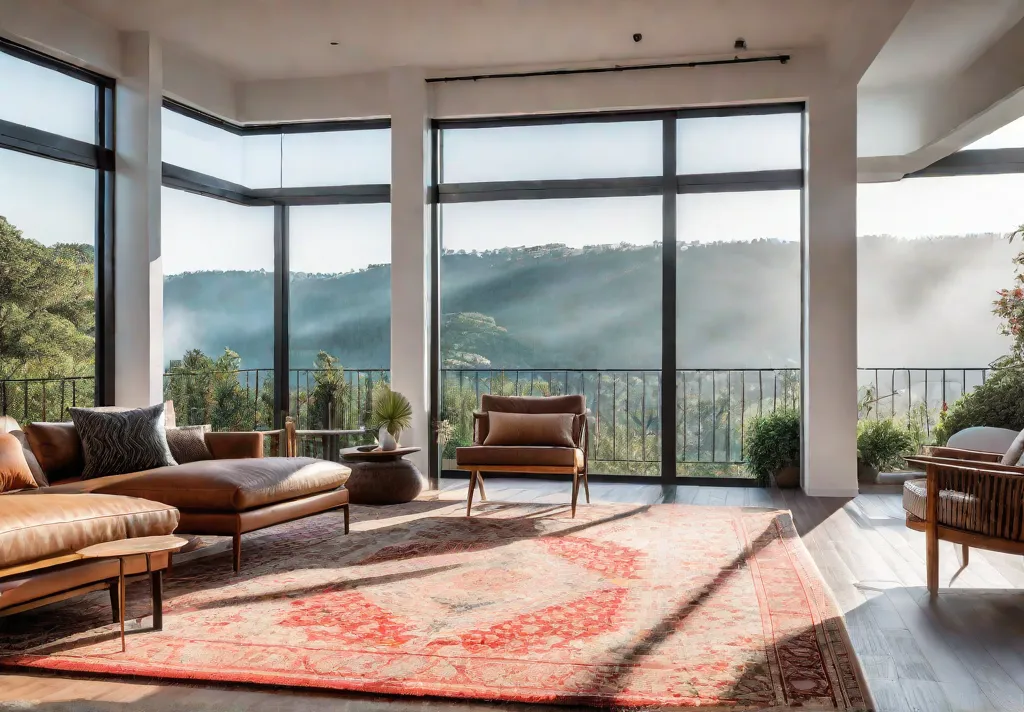Picture this: you’re relaxing in your living room, surrounded by the same old furniture arrangement – a couch facing the TV, a couple of chairs, and a coffee table in the middle. While this setup may be comfortable and familiar, have you ever wondered if there could be a more exciting way to design your living space?
As a New York City-based lifestyle writer, I’ve seen firsthand how homeowners and renovators break away from the traditional living room layout to create truly unique and personalized spaces. In this article, we’ll explore five alternative approaches that go beyond the standard couch-and-chair setup, each offering a fresh perspective on maximizing your living room’s potential.

Whether you’re looking to embrace an open floor plan, experiment with multi-purpose spaces, or incorporate unconventional furniture, these innovative ideas will inspire you to rethink how you approach your living room design. So, get ready to say goodbye to the predictable and hello to the unexpected!
Embracing Open Floor Plans
Open floor plans have become increasingly popular in modern home design, and for good reason. This layout can create a seamless, fluid environment that encourages better communication and social interaction by blurring the boundaries between living spaces.
One of the key advantages of an open floor plan living room is the ability to integrate it with adjacent spaces, such as the kitchen or dining area. This integration can foster a sense of connectivity, making it easier to move between different zones and encouraging everyone to mingle. To make the most of this layout, it’s essential to use furniture and zoning strategically to define distinct areas within the open space.
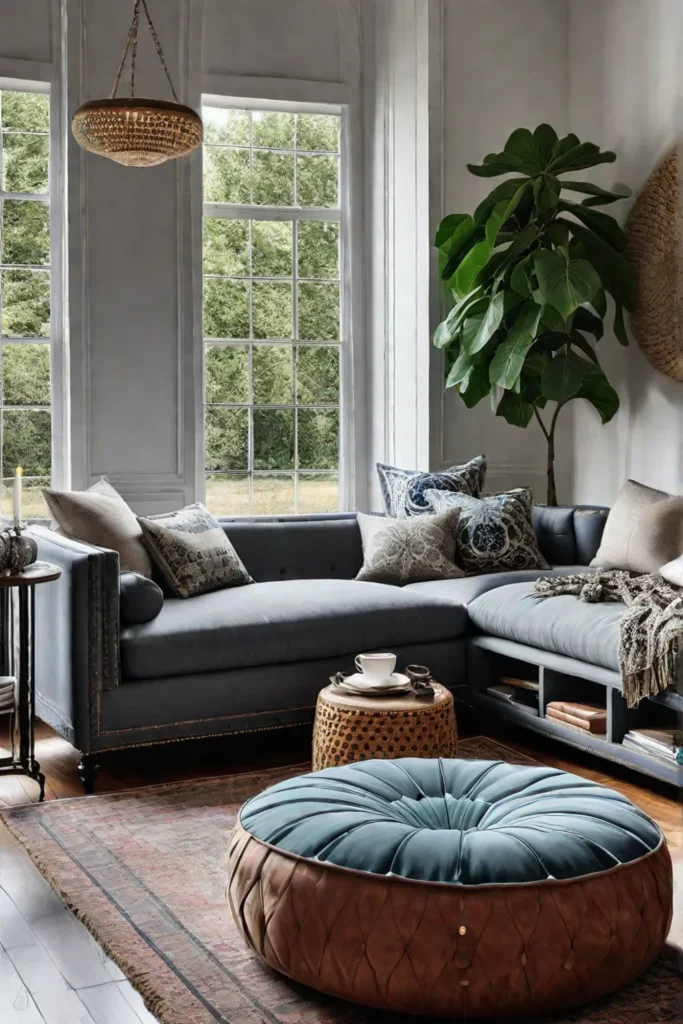
For example, you could place a large, L-shaped sectional against the wall to create a cozy conversation area while using area rugs and pendant lights to delineate the living room from the kitchen. This way, you can maintain a sense of privacy and separation within the open plan while benefiting from increased natural light and visual connectivity.
Embracing Multi-Purpose Spaces
In today’s dynamic and ever-changing lifestyles, the living room is often called upon to serve multiple functions, from a cozy lounge area to a versatile workspace. Embracing this multi-purpose approach can help you maximize your limited square footage and create a living room that truly adapts to your needs.
One way to achieve this is by incorporating flexible and multi-functional furniture. Consider a convertible sofa or daybed that can transform into a guest sleeping area or an ottoman with built-in storage to keep clutter at bay. Choosing pieces that serve multiple purposes allows you to define distinct zones within the living room without sacrificing valuable space.
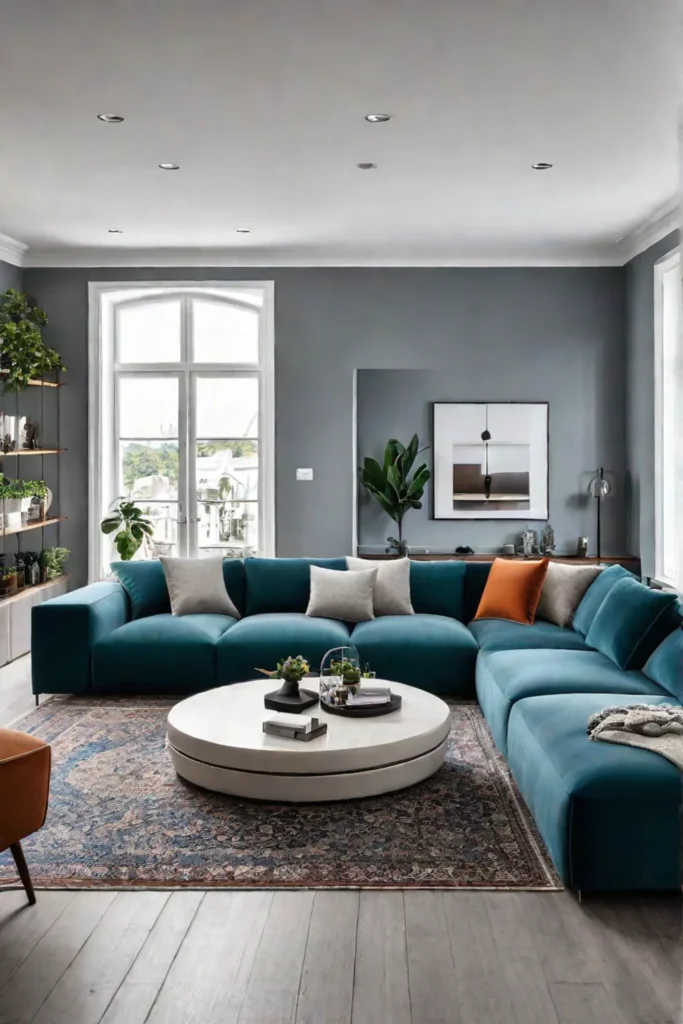
Additionally, you can design your living room to accommodate dual-purpose use, such as combining a living and work area or a living and dining space. This might involve incorporating a desk or workstation that can be hidden or integrated into the overall design when not in use or arranging your seating and dining furniture to encourage relaxation and social interaction.
Remember, focusing on storage and organization is the key to making a multi-purpose living room work. To maintain a harmonious, clutter-free environment, implement thoughtful solutions, such as wall-mounted shelves or built-in cabinets.
Exploring Furniture Alternatives
While the traditional sofa and chair setup is a timeless choice, many alternative furniture options can breathe new life into your living room. You can create a space that truly reflects your style and preferences by exploring unconventional seating arrangements and unique furniture pieces.
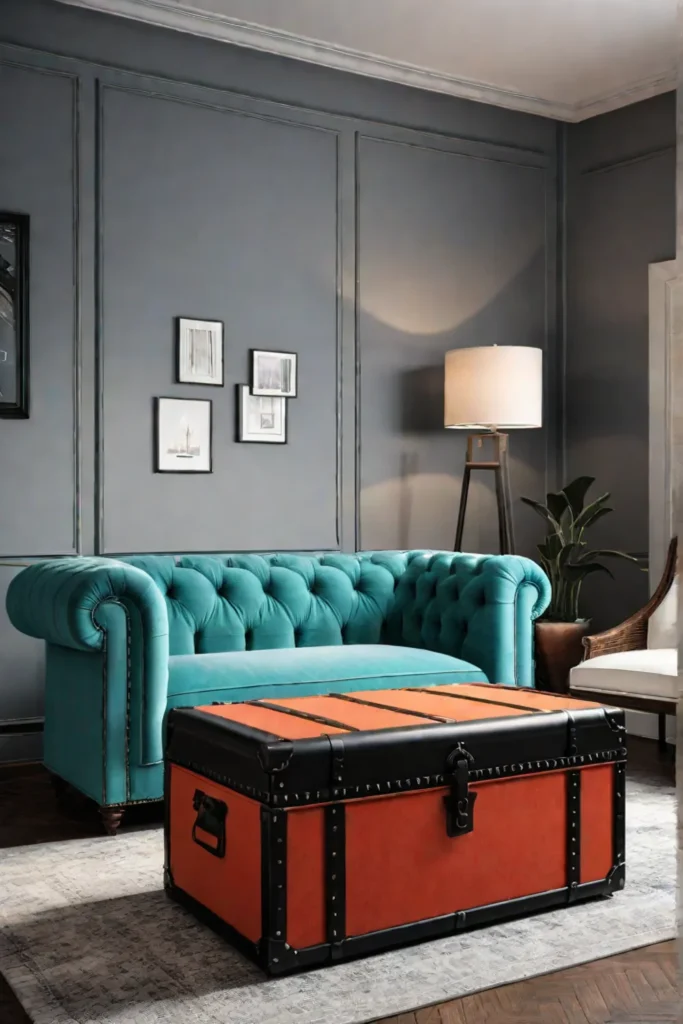
Consider incorporating non-traditional seating, such as floor cushions, bean bags, or modular sectionals. These options can help foster a more relaxed and inviting atmosphere, encouraging guests to kick back and engage in deep conversations. Alternatively, you might opt for unconventional furniture pieces like daybeds, chaise lounges, or swivel chairs, which can add a touch of sophistication and visual interest to your living room.
Don’t be afraid to think outside the box when it comes to the coffee table. Oversized ottomans, sculptural tables, or low-profile designs can all serve as unique and functional centerpieces for your living room. The key is to balance alternative furniture with more traditional pieces to achieve a cohesive, visually appealing space.

Embracing Sectional Seating
Sectional sofas have long been a popular choice for living rooms, and for good reason. With their versatile and customizable design, sectionals offer a seating solution to accommodate larger groups and promote social interaction.
One of the main benefits of a sectional sofa is the ability to utilize its modular design to define different zones within your living room. For example, you could position a U-shaped or L-shaped sectional to create a cozy conversation area while allowing easy traffic flow around the room. Additionally, some sectionals come with built-in chaise lounges or recliners, further enhancing the comfort and functionality of the space.
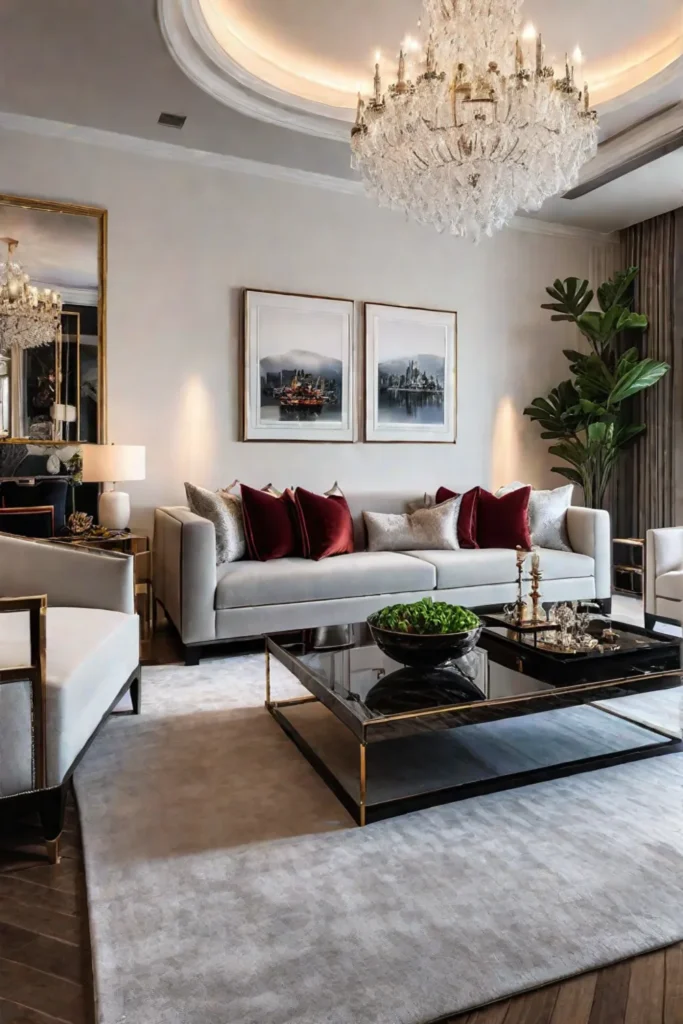
When selecting a sectional for your living room, consider the scale and proportions to ensure it fits seamlessly within the overall layout. Consider the material, color, and style to ensure the sectional complements the rest of your decor. With a little planning and creativity, a sectional sofa can be the perfect centerpiece for your living room, offering both style and practicality.
Embracing Asymmetry and Unconventional Layouts
While symmetry and balance are often the go-to principles in living room design, embracing asymmetry and unconventional layouts can create a visually striking and engaging atmosphere. By breaking away from the traditional and experimenting with alternative arrangements, you can add a sense of dynamism and personality to your living space.
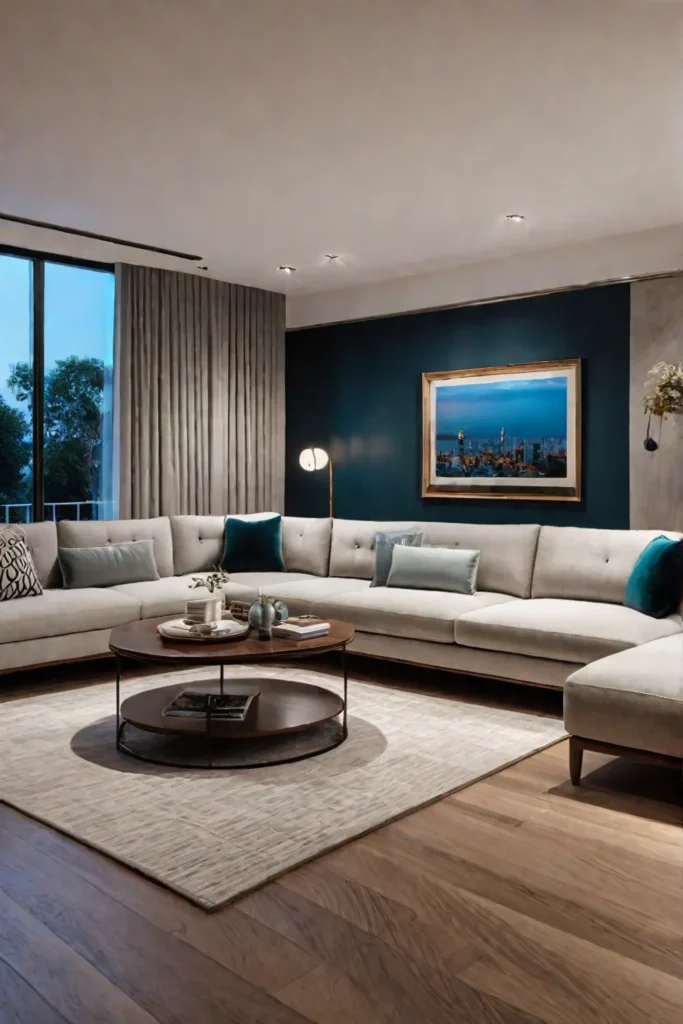
One way to incorporate asymmetry is through your furniture placement and groupings. Instead of aligning your pieces symmetrically, try positioning them at different angles or distances from each other. This can create a more dynamic and eye-catching layout that encourages casual interactions and relaxed conversations.
You can also explore angled or off-center seating arrangements, such as positioning a curved sectional or L-shaped sofa at an angle. This can help define a cozy, conversation-friendly zone within your living room. Incorporating non-rectangular furniture shapes, like circular ottomans or sculptural coffee tables, can further contribute to the unconventional and visually interesting aesthetic.
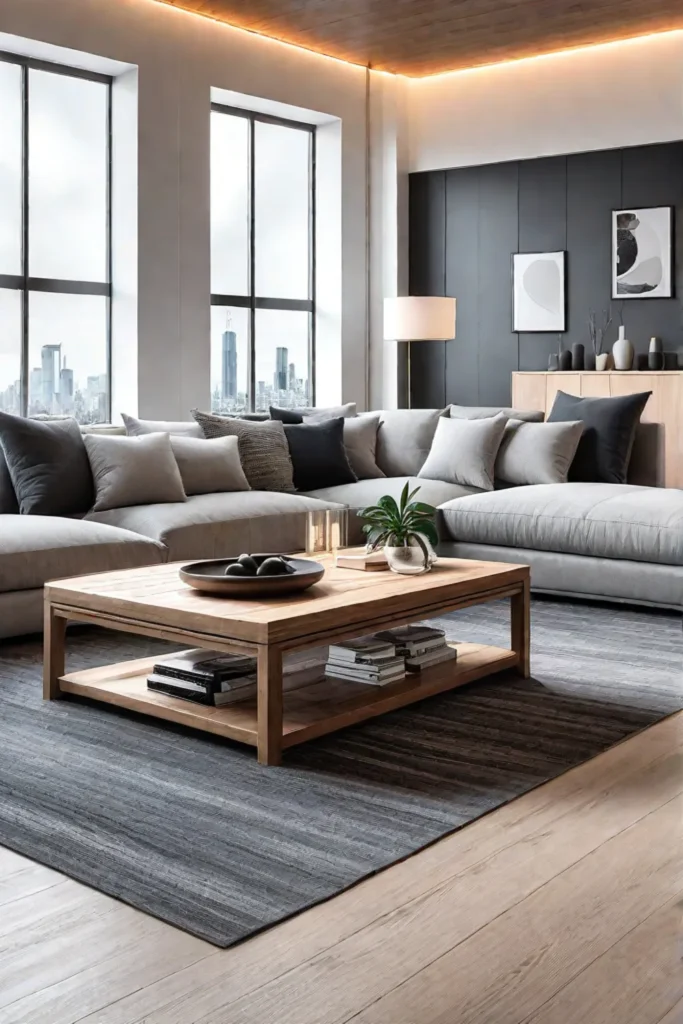
Remember, it’s important to balance these elements and more traditional furnishings when embracing asymmetry and unconventional layouts. This will help ensure your living room maintains a cohesive and welcoming atmosphere while showcasing your unique style.
Conclusion
This article explores five alternative living room layout ideas that go beyond the standard couch-and-chair setup. From embracing open floor plans and multi-purpose spaces to experimenting with furniture alternatives and asymmetrical arrangements, these innovative approaches offer homeowners and renovators a fresh perspective on transforming their living rooms.
By breaking conventional norms and embracing the unexpected, you can create a living room that reflects your style and lifestyle. Whether you’re looking to maximize space, enhance functionality, or add a touch of visual interest, these alternative layout ideas will inspire you to rethink how you approach your living room design.
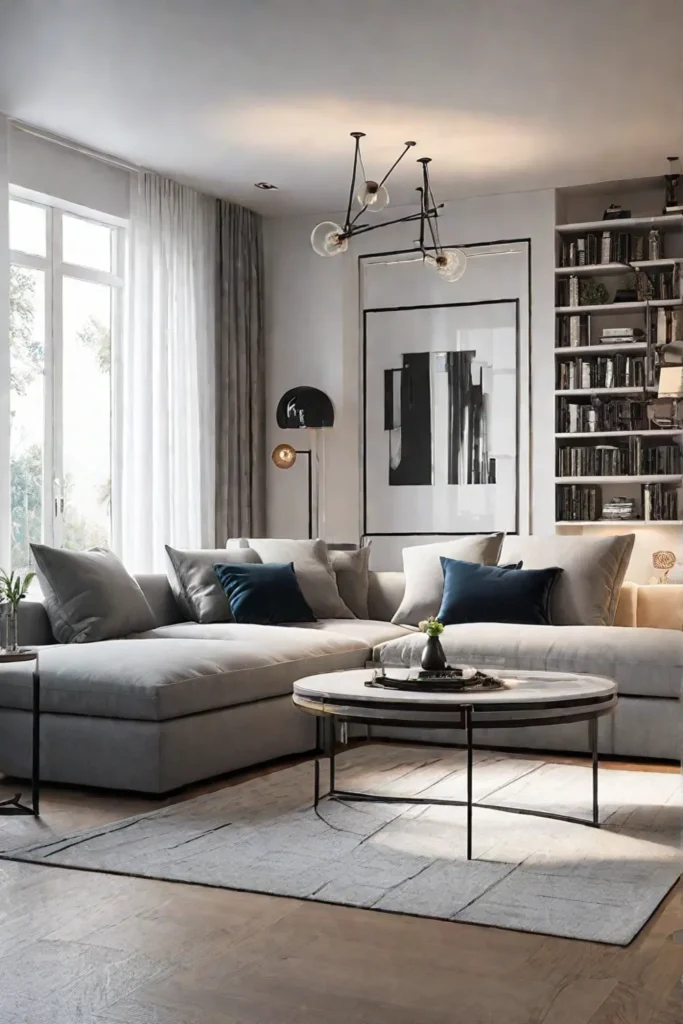
So, what are you waiting for? Start exploring these exciting possibilities and discover the transformative power of alternative living room layouts. Your dream living space is just waiting to be unleashed!
